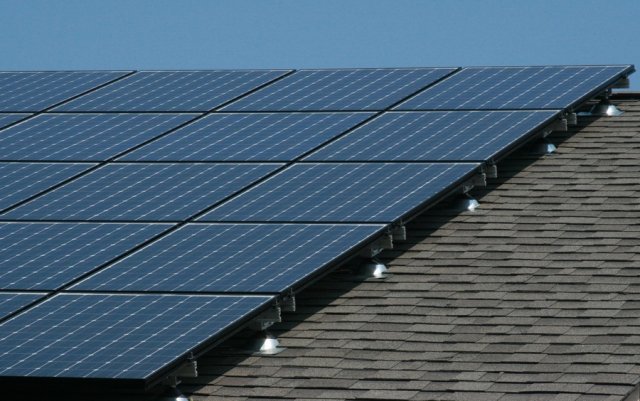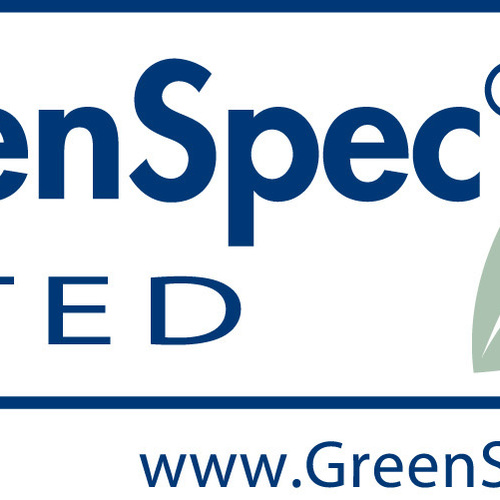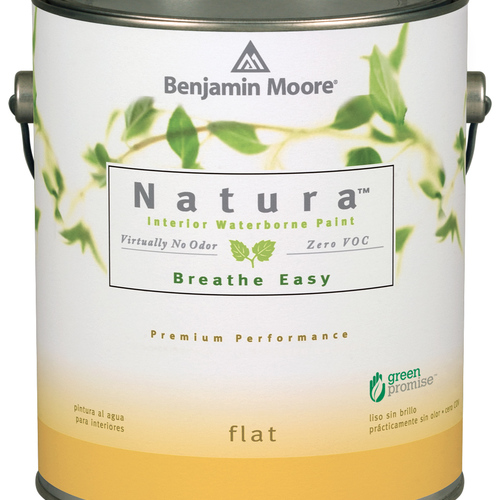
Image Credit: Rob Wotzak
Process Comes First, Then Products
Green houses can be built with un-green products and un-green houses can be built with all-green products.
In our common vernacular, “green” has come to mean many things and, at the same time, nothing at all. It has become the de facto term for environmentally sound—appplied to everything from healthy living to energy consumption and global warming. Clever marketing has people choosing hair products and hybrid cars based on their green status.
Greenwashing 101
By watering down the term to mean expensive products, we promote the idea that we can buy our way to greenness without delivering real solutions to the environmental issues we face. This is greenwashing, folks, and it has a very real potential to derail the positive effect of the green sector. We run the risk of alienating consumers as they become jaded by marketing claims that don’t represent reality.
When we really analyze the choices and products being offered by the green industry, it seems that we are starting at the wrong end of the spectrum. Almost everything that is fed to consumers turns out to be the most expensive and often the least effective measures. Installing solar electric panels on a house will cut the coal we burn and lower the electric bill, but it’s not the best place to spend your money first. We’ve been building bigger, more power-hungry homes for years; do we really think the answer lies in yet another big purchase?
What matters are results, not products
If we really want to reduce pollution, stop global warming, and minimize our dependence on fossil fuels, we need to be honest and clear about how we’re dealing with consumers’ wants and needs, and frame “green” by results.
Housing is a great place to start. There are more than 125 million existing homes in the United States. According to the U.S. Energy Information Administration, these buildings represent 21% of the nation’s total carbon footprint. Clearly, we can have an immediate environmental impact by improving the efficiency of these existing homes. Solar panels, hybrid cars, tankless water heaters, bamboo floors, and no-VOC paints are great products, but when you approach a building as a system, you realize that individual products, no matter how high tech, cannot replace proper fundamentals like tight ductwork, good insulation, and weather stripping. By making smart improvements and working with the basics (which are often less expensive) we can make houses work properly so that they become healthy, comfortable and efficient—at a fraction of the cost.
We need to focus on solutions to people’s problems, whether they are energy costs or allergies. Once we have identified the core of each problem, we can address the real world issues and make a real difference when it comes to reducing the carbon footprint.
Tips to avoid greenwashing
As we in the green-building world market our services and solutions, there are some clear guidelines we can follow to ensure we are not engaging in greenwashing.
Get the big picture. Understand all of the environmental impacts of your product across its entire life cycle and share that information with your customers.
Be honest. Don’t overemphasize benefits to hide shortcomings.
Walk the talk. Keep improving your environmental footprint, and encourage your customers to join you on that journey.
Prove your point. Draw on respected standards and certification programs for legitimacy of environmental claims.
We are not lacking the technology to get the job done. The solution lies in helping consumers make smart choices, and thinking in terms of entire systems—not simply the latest products.
Related article: The Six Sins of Greenwashing
—Matt Golden owns Sustainable Spaces in San Francisco, California.
Weekly Newsletter
Get building science and energy efficiency advice, plus special offers, in your inbox.














6 Comments
EXcellent!
I know USGBC architects who dismiss the NAHB GreenBuild program, but the GreenBuild program does help consumers build more energy efficient homes. All of us have to make efforts to conserve energy, regardless of what else we do in our homes. The use of products that are sourced "sustainably" is a definite plus, but as the article points out, if they don't contribute to the overall improvement of the environment, they are not enough.
So True
Once people understand that its the steak not the sizzle that is important we will be able to make a real impact on climate change. Its starts with our elected officials and trickles down to schools, business, and homeowners. If we can encourage a fundamental change in thinking we can make a large impact. Start with the Energy Audit to ID the problem, take air sealing measures, add insulation, improve mechanical systems, and then look at renewable energy. The house is a system and must be approached with this in mind. Anthony Stonis [email protected] http://www.buildingenergyexperts.com
Need to keep repeating this
People want to latch onto things - solar panels, tankless heaters, etc. - because they are easy to understand, sometimes a little sexy, and they can hold them. They love products. The problem is that green building is all about process - harder to understand, rarely sexy, and almost impossible to hold. This will be a long, slow transition, but hopefully someday people will understand the difference and ask for what they need (the right process), instead of what they think they want (fancy things).
Installation Methods and Knowledge
I agree with you Matt. The purchase of a product with a claim to "Green" is just the start. Having been in the construction trade for quite a few years has proven that installation techniques are focused with the sub-contractor "this is the best way" (meaning this is the easiest way that I have found to do this and still get away with it). They typically have no concern of the whole project, with their focus of completing their contract.
Typically, the installers have no construction morals, just get the job done. Even with the archaic materials of building insulation, air infiltration and thermal performance could be installed in a more efficient manner. Carpenters framing methods not allowing for efficient building envelopes, electricians and plumbers installing wire and pipe without concern of thermal envelope. Penetrations not properly sealed are another air infiltration violation.
Just because a product is labeled "green" does not mean that the manufacturing of the item has concern of how much fuel is used for transportation of the raw materials and the final product. It does not conclude that the product is manufactured with efficient machinery, or in a building that is resource friendly. What about the packaging, can it be implemented with less packaging, or a more efficient package size? What about the process of manufacturing, can the product be re-engineered to eliminate energy thirsty manufacturing processes? Can the production line become more streamlined to decrease the size of the facilities needed?
The "Green" concept is a start. But, as of now, it appears to be just a marketing method to blunder customers into believing they are reducing our carbon shoe size to increase sales.
"Green" is nothing more than
"Green" is nothing more than a feel-good concept.
Market forces will take care of how energy-efficient people want to be.
If you let legislators get in the way of free narkets, you will always have unintended consequences.
Take for example, LED traffic lights. Legislated for energy eficiency, they save some energy, but cause many unintended consequences.
First, incandescant bulbs melted snow and ice from the housings, and LED's do not.
Second, because they allow build-up of ice & snow, you need to have crews out on the street clearing them. If you don't, then the supporting structures are prone to failure under the additional weight.
The cost of this winter-time maintenance is more than the cost savings year-round. I should know - I know how much is paid to do the maintenance.
a negawatt is more valuable than a megawatt
A negawatt is more valuable than a megawatt. The energy you can save has a smaller foot print than the energy you can create.The construction,distribution and installation of solar electric panels has a large footprint.
Tighter more energy efficient homes do save energy by keeping cold air out. Keeping conditioned air in changes air quality-requiring products such as cabinets and adhesives that off gas less.
Products do make a difference. An aspect is indoor air quality. By forcing companies to make flooring adhesives, for example, that off gas less we have a healthier home. The "green" awareness by installers, such as myself, using "GreenGuard": rated products shows a label-a marketing tool- on the product. I purchase more of the product than the more toxic alternative, as I don't want to breathe the initial and typically the most toxic time. Sales volume makes that product more competitive and the market forces the more toxic products to become "greener."
Log in or create an account to post a comment.
Sign up Log in